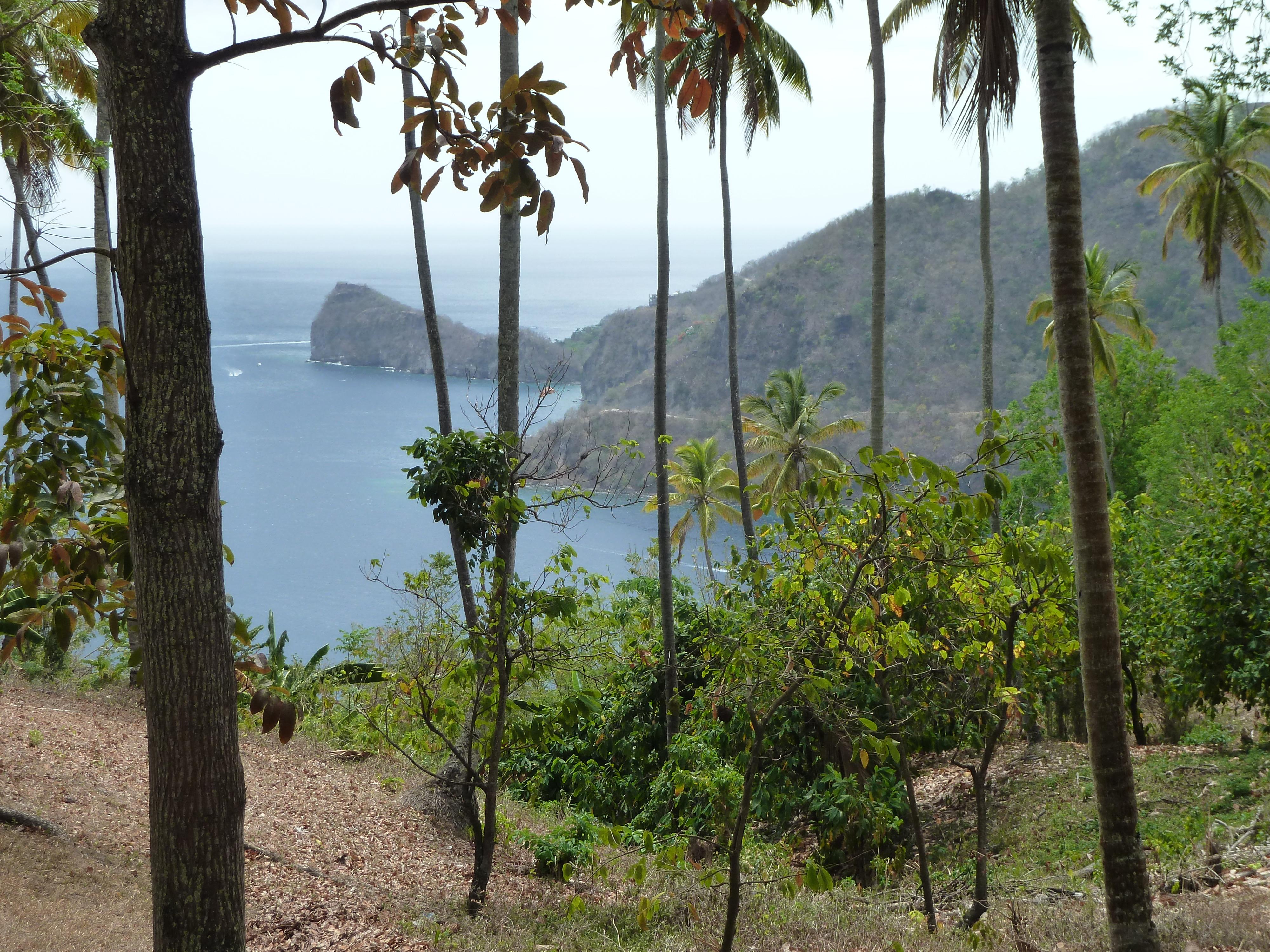St Lucia
General
Independent democratic state, part of the British Commonwealth, although it changed hands fourteen times between the British and French, so there is a significant French influence. The civil law is based on the Quebec Civil Code, with English law additions, and it is a member of La Francophonie, the global community of French-speaking peoples. Official language is English but English and French is commonly spoken.
It's in the eastern Caribbean Sea, on the boundary with the Atlantic ocean. The island is 43 kilometres long and 22 wide, population 160,000, in the Windward Islands, north of Venezuela.
Climate: It has a tropical climate, with high temperature, warm seas, and intense rainfall during the rainy season - but this is a warm sunny place, with eight hours of daily sunshine every month.
Currency: East Caribbean dollar
1XCD = £0.28 = €0.31 = US$ 0.37
Flight time London to Hewonnara Airport : 8 hrs 15 min.
Time in St Lucia: UTC - 04.00
Entry requirements: valid passport, return ticket.
Visas? Not for US, EU, Canadian, Australian, British, but needed for certain countries. See www.govt.lc/faqs for more information.
(written August 2017)

Climate charts for St Lucia
We visited in April 2014. The wet season runs from June to November, dry season from 1 December to 31 May. Hurricane season in the Caribbean is June to November.
UK Foreign office is generally relaxed about St Lucia, though it has been classified as having risk of Zika virus transmissions; you should take precautions against mosquitoes. https://www.gov.uk/foreign-travel-advice/st-lucia.
Sea temperature - 27°C to 29°C all year round (that’s warm).
More information - http://www.holiday-weather.com/st_lucia/averages/
St Lucia visit April 2014
International flights arrive at Hewonnara Airport in the south, and we were staying near Rodney Bay in the north. There are two main roads heading north - one along the Caribbean side west) and the other along the Atlantic. The Atlantic road is faster, you can cross over to the west higher up the island, and go through the capital, Castries.. Driving is on the left, and picturesque, but you have to watch out for the occasional landslip or rockfall. Trip Advisor has a good section on hiring cars and driving.
https://www.tripadvisor.co.uk/Travel-g147342-c208223/St-Lucia:Caribbean:Driving.In.St.Lucia.html
We were staying with friends near Treasure Bay north of Castries, and spent a lot of time slow snorkelling. Visibility wasn't great at first, but there were a lot of fish around, as we could see from the guys fishing off small boats in the bay. We saw the ubiquitous sergeant majors, trumpetfish, squadrons of cuttlefish, bigeyed squirrelfish, banded butterflyfish, Fiji blue devilfish, tomtate, soldierfish, spotted goatfish. There was plenty to keep us happy, though you had to watch out not to get pitched onto the sharp rocks by waves. Gill got a nasty rock graze that lasted some days.
Trip round the island
We decided to look around, so went on a Sea Spray cruise down the west coast to Soufriere. This was a tourist cruise, costing US $120 per person, taking in the Soufriere Waterfall, bathing in the mud baths at Sulphur Springs, sailing through the picturesque Marigot Bay, and visiting the More Coubaril estate to see how cocoa is extracted from beans. It was a full day and more expensive than a normal snorkel boat trip, but still good value.
We finished by snorkelling on the north side of Anse Cochon, which was worth the visit.
On the way down we talked to the skipper while he steered the boat with his foot. He swims the Atlantic Coast sometimes, though he says you have to watch out for rip currents. He's not worried about the tidal range here, at two to three foot it doesn't really matter. We also talked about the IPL (cricket) which is very big here. Saw Mount Gimie, the tallest mountain, which looks like a man's head. The Pitons, two volcanic plugs with a beer named after them, are supposed to be the feet. It's a stunningly beautiful island.
Two best snorkel spots
We hired a taxi for a day to get to the two best-known snorkel spots, both near Soufriere.
Anse Chastenet has a tricky approach road, climbing, rutted and difficult. If you can get there by boat, much the better. It's a marine reserve, so the fish are larger and less nervous than usual. The beach is mainly hotel, but has a public reef. Walk in, and you're immediately among coral, with stunning visibility and a whole orchestra of trumpet fish. This beach is a class above the others - marred only slightly by divers learning to dive. A wonderful place to snorkel. Parrot fish, big black fish we couldn't identify, a transparent fish with luminous blue stripes, a peacock flounder. We spent a joyous hour there.
Then on to Sugar Beach, formerly known as Jalousie, a short drive away (they are north and south of Soufriere). Along a long road, park in the visitors car park (it's a five-star hotel complex) then walk down the hill (or hop a shuttle) to another equally stunning reef. The Piton continues downhill underwater and has a beautiful drop-off reef with public access. We saw queen triggerfish, sweepers, yellowtail damselfish, banded butterflyfish, copper sweepers, Christmas tree worms, sand diver, ocean surgeon, fairy basslets, and loads of others. It's a steep climb back to the car park. Take a small bribe and pay a shuttle driver to get you back to the car park.
We couldn't decide which was better - Anse Chastenet or Sugar Beach. We did agree that these two were the best snorkelling we had on St Lucia.
Snorkeling Online describes St Lucia as having some of the best waters in the Caribbean. It's worth checking out their website:
https://www.snorkelingonline.com/pages/best-snorkeling-st-lucia
In our final days, we saw a stone fish (watch out for these, you really really don't want to tread on one), a gold-spotted sea snake, a spotted moray, an enormous parrot fish, and an eighteen-inch eel. If you take your time and get to know the waters here, the results can be very rewarding.

Frog with mouth sewn shut
The island of St Lucia has a violent history. It was first settled by the Arawak Indians in 200 AD, though they were driven out by the more aggressive Caribs, who called the island 'Hewonnara' (current name of the airport), or 'Land where the iguanas live". The Caribs had hereditary kings and shamans, and a ferocious fighting reputation. Their war canoes could hold 100 men and were fast enough to catch a sailing ship.
They couldn't withstand the Europeans, who overran them and started sugar plantations supported by slaves brought in from Africa. The islands changed hands fourteen times between 1674 and 1814, until slavery was abolished in 1834. By this time, the majority population had developed their own language, St Lucian Creole French, also known as Patois ("Patwa"), or Kweyol, which is spoken by 95% of the population. Jounen Kweyol (Creole Day) is celebrated on the last Sunday in October.
It was a slave subculture, with its own secrets, notably the practice of obeah, which westerners would translate as 'voodoo' or 'magic', though this is the subject of some argument. Obeah occasionally surfaces today.
In May 2014, when we were there, people were upset about an incident in Castries, the capital, where a frog with its mouth sewn shut was found outside the courthouse. To begin with, we thought this was just a bit of casual cruelty, but it had a deeper meaning. In the old days, when someone wanted to stop a witness from testifying in court, they would write the witness's name on a piece of paper, put it in a frog's mouth and sew it shut. The symbolism was clear and the implication was that it was backed up by magic. - so the witness was unable to testify.
This happened in April 2014, at the same time as a significant court case was going on...

PS - Saturday 24 May 2014
Booked to go on a Dive Boat (Snorkellers Welcomed) which left Windjammer Resort at 9 am - US $ 88 per person. Boat called into Marigot Bay for refuelling then we jumped out into a bay south of the village. Sea choppy, no visibility, so we upped and dropped into a cove further south. Still not much luck - some small fish, but not really much to write home about. Couple of parrot fish.
Then we moored over a wreck in Anse Cochon (Bay of Pigs). Where're we going to go? The skipper asked if we'd like to swim around the boat and watch the divers... No, we wouldn't. So we drove over to the South Reef and had a much better time, looking at parrot fish, a tiny beautiful little box fish ( black and white, like a jewel box), some Reef Squid that looked like cuttlefish, a trumpetfish, some parrotfish, needlefish, four-eyed butterflyfish, half-and-half chromis
It was good, but not exceptional. We were left with the feeling that this was a dive trip, with snorkellers allowed to come along to watch the divers. No safety briefing, no real guide (there was a person who who swam with us, but with not much interest), nice divers. It might have just been a bad day, things might be very different now, but it wasn't really worth the price. This was when we started thinking about the difference between going out on a snorkel trip and being an extra on a dive boat. See Boat Trips.
Would we go again? Probably not. It was a beautiful island with great people and a charming place to stay. But there are still lots of other places on the list. If we did go, we would probably choose January to May.
Useful links:
https://www.gov.uk/world/st-lucia
http://www.holiday-weather.com/st_lucia/averages
https://www.lonelyplanet.com/st-lucia
https://www.snorkelingonline.com/pages/best-snorkeling-st-lucia all photos this page Steve Elsworth / Gill Collins

Usual warning: we have made every effort to make sure this information is correct and up-to-date, but you need to check it all yourself.
© Garreg Lwyd Ltd 2018
Do you have any comments, or recommendations? Send us a message! We'd love to hear from you...
